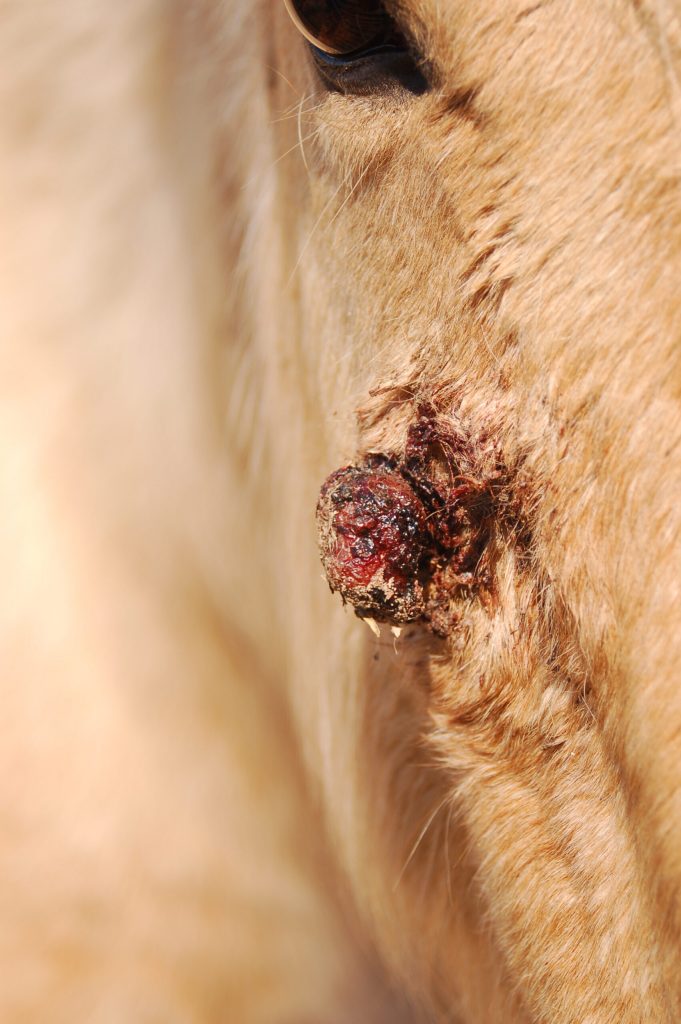
At the 2022 British Equine Veterinary Association (BEVA) conference, Anna Hollis, DACVIM, DECEIM, MRCVS, discussed treating equine sarcoids with tigilanol tiglate (TT). This is a medication used to treat mast cell tumors in dogs. The medication can actually be used to treat any type of tumor, but it does produce a severe, acute inflammatory response. The intense inflammatory response recruits immune cells and causes vascular disruption. This leads to hemorrhagic necrosis and sloughing of the lesion with eventual re-epithelialization.
Hollis noted that this drug is not a DNA-damaging agent, so there are fewer concerns compared to using cisplatin or carboplatin to treat equine sarcoids. In addition, she said treatment of a sarcoid requires a sufficient bulk of tumor to facilitate an accurate intralesional injection.
She presented data from a study of 14 horses with 18 sarcoids. Five of these sarcoids had been previously treated with radiotherapy, laser surgery, MMC, cisplatin, or electrochemotherapy with cisplatin. However, they failed to respond. Twelve of the 14 horses could be treated with TT under sedation and local anesthetic. The other two required general anesthesia due to sarcoid location or the horse’s temperament.
Veterinarians are cautioned to not administer more than 4 mg per treatment due to the intensity of an inflammatory response. A typical dose ranges from 0.4 mg to 4 mg. It is injected with a single stick, then perfused in the tissue using a fanning technique.
Horses tend to be quiet and inappetent for 24-36 hours following treatment. With this in mind, adjunctive treatment using IV NSAIDs or dexamethasone as needed can mitigate the dramatic swelling and pain response.
Of the 18 sarcoids treated with TT, six required two to four treatments; five of the six were lesions previously treated with other therapies without response.
Complications were varied and included jugular thrombophlebitis distant from the sarcoid; a very wide sloughing area; and local lymph node abscessation that resolved with supportive care.
Resolution occurred in 16 of 18 lesions (89%) with six needing more than one treatment. One lesion recurred at 11 months post-treatment, and two that had received previous treatment further required a combination of TT and strontium to achieve resolution.








